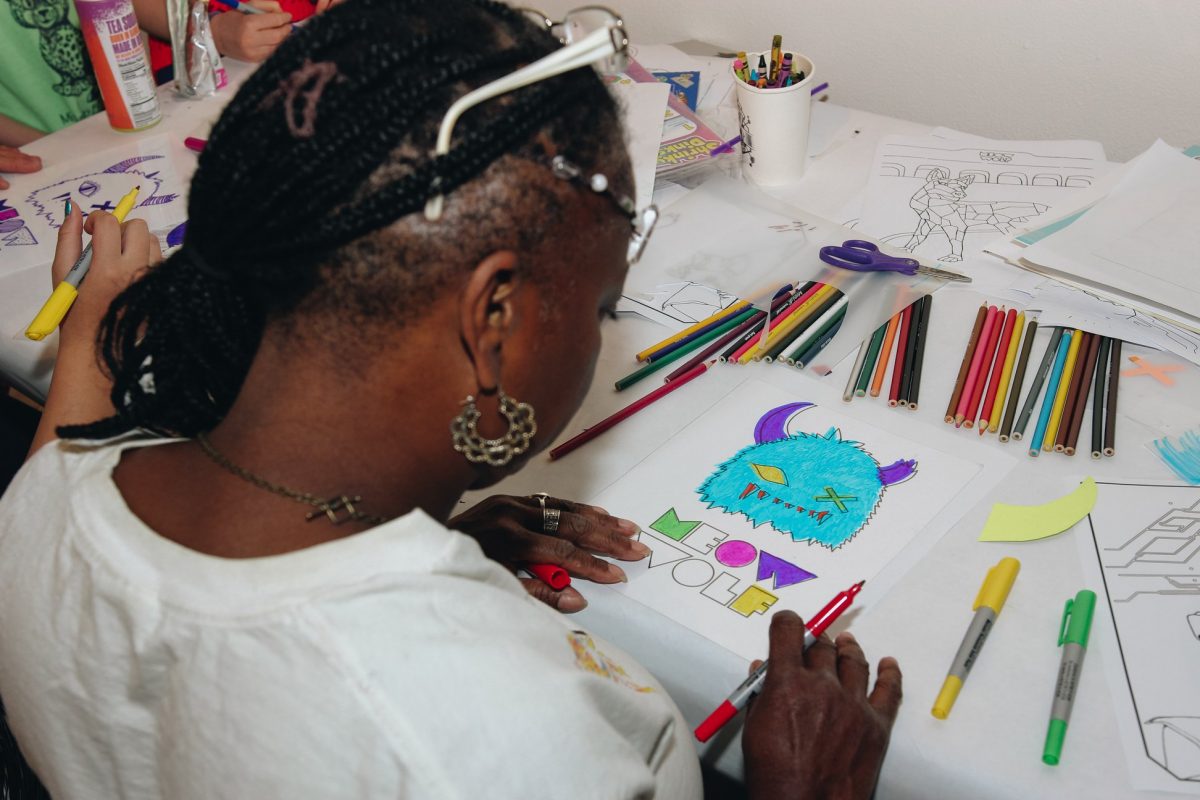Your Public Library Loves You

From the time she was 15, 23-year-old transgender woman Ana* knew she was different—she just didn’t know how.
“It’s the kind of thing that always sat in the back of my mind,” Ana said. “But I never really had the vocabulary for it.”
She’d been a frequent user of her public libraries around Austin, Texas since she could remember, going with her mom for books and movies, for schoolwork as her elementary school’s in-house library closed for renovations, and getting into classical music during high school through CDs she checked out and burned onto her computer.
And eventually, she discovered herself on the shelves.
“I remember asking my parents, because I read it in a book or something,” she said. Although her parents weren’t angry at her questions, the answers she got from them didn’t seem complete, so she starting searching the library’s catalogs of materials.
Once she figured out what she was looking for, Ana got a friend from high school, the only one who knew about her feelings, to drive her to the Spicewood branch, even though she knew the downtown branch had a larger selection. She wanted to search away from her local area where nobody knew her, and she wouldn’t chance running into her family.
“I was kind of incredibly nervous,” she said.
At Spicewood, Ana learned more about what it means to be transgender through the library’s own materials and free access to the internet at a place where no one would question her search history or judge her browsing habits.
“Sometimes I find myself recommending these books I read before to people who are questioning themselves,” she said. “I think they’ve definitely helped.”
“Public libraries are founded on a tradition of supporting minority communities,” said Clo Cammarata, 56, programs and partnerships manager at Richland Library in Columbia, South Carolina. “I’ve been a librarian for many years in different parts of the country, and I think that public libraries are very accepting to the populations who are around.”
Denver has its own tradition of tolerance through accessibility according to Chris Henning, marketing communications manager of the Denver Public Library.
A Denver native, he’s seen Colorado evolve throughout the decades. In the 80s, he saw the state’s ugly side as he experienced homophobia during his college years. He lived through the 90s, when Colorado was labeled “the Hate State.” He’s watched the city boom over the last decade, becoming a forefront for queer tolerance and acceptance.
“I’d say it’s been more prevalent in the last 15 years, as Denver has become more progressive,” Henning said.
Along with keeping themed fiction and nonfiction resources up-to-date, Denver’s main location is focusing on growing its special collection of LGBTQ Western history, spotlighting personal objects, documents, and diaries as research tools for anyone interested in primary sources of LGBTQ life.
But, it doesn’t stop there. The Denver library furthers its message of equality to the community through programming and partnerships with LGBTQ events and organizations.
A favorite of Henning’s is the library presence at Denver’s PrideFest, where the library sets up a booth to talk to people about what it can do for them and connect with the activism that has been ramping up.
“We have a very dynamic LGBTQ work group of library employees,” he said. “We have a good time marching and showing our pride in our community and our library.”
Cammarata has also experienced cultural shifts in LGBTQ perception that have affected what libraries offer their communities, such as a major surge in the need for accurate, LGBTQ-specific health information during the AIDS crisis when she was working in New York.
“I think that libraries stepped to the forefront to make sure people had the correct info,” she said. “Libraries continue to really say, ‘Let’s look at the community, and what do we want to do to reflect acceptance, learning, and concerns?’”
Cammarata cultivates relationships with local LGBTQ support in Columbia as well.
“Partnering with different organizations in the community and seeing what their challenges are and what makes their members comfortable is a good way to make sure the library is a way of continually questioning what we can do and how we can do it better,” she said.
These partnerships are designed to help LGBTQ people like Dev Kumar*, a 35-year-old IT professional who grew up in India, a country where homosexuality was unconstitutional until earlier this year. He didn’t have the options of the open discussions he discovered online, and when he came to the United States and as a consequence does not automatically think of his public library as an LGBTQ resource.
“I never really lived in a depression because of my sexuality,” Kumar said. But because of the law and stigma in his country, he never really came out to his parents and relatives back home, though one of his three sisters and his straight best friend have known since he has. He’s hoping the change to India’s constitution will help his LGBTQ community come into its own.
Cammarata and Henning both say that they have a lot of luck with ‘passive programming,’ a type of library service where materials for a program, such as art supplies or a themed display of books, are set out for library patrons to experience on their own time. This catches the interest of LGBTQ users like Dev without being intrusive, especially for youth groups.
“If they want to drop in, there’s board games and video games and places to meet with their friends and talk; we specifically make those times available,” Henning said. “We want the library to be thought of as a public, safe space where people are free to be how they are.”
Sometimes, just having the materials available isn’t enough. That’s when libraries have to insert themselves into the community.
One way the Denver Public Library does this is by using a lot of social media advertising, which also happens to fit the library’s small budget. They’ve gotten a great response from their Drag Queen Story Time and other programs designed to bring together pieces of the community that may not otherwise interact.
“It’s to get people used to drag queen culture in a fun way,” Henning said. “It’s trying to get people comfortable with [drag queens] doing something that would ordinarily be done by someone more like themselves.”
In the wake of pushback against drag queen storytime in other areas of the country such as New York, Henning says he hasn’t experienced much, if any, outside objections to the Denver Public Library’s LGBTQ initiatives since he started working with the library five years ago. Still, Negative comments on the library’s blog posts that highlight LGBTQ materials are a rare example of one of the hurdles LGBTQ public library services still have to clear for full acceptance.
“If anyone pushes back, we always say it’s our mission to provide services to everyone regardless of who they love, what language they speak, whatever,” said Erika Martinez, director of communications and community engagement at the Denver Public Library.
Henning, and Cammarata both say that more active programming is the future of LGBTQ services in public libraries.
Ana said that she’d really enjoy more active programming for LGBTQ people such as herself.
“I feel like, especially for people who are in other cities that don’t have LGBTQ centers, it just makes sense for that to be the library.”
*To protect privacy, some names have been changed.
What's Your Reaction?
Melanie Griffin is a freelance writer and future librarian in Columbia, South Carolina. She helps the Harriet Hancock LGBTQ Center keep their library running and collects weird titles of old LGBTQ pulp novels. Her Instagram is @workappropriategoth and her newsletter site is https://melanietheconstantreader.substack.com/publish.









